The names atop college football's hierarchy rarely change. Five programs, after all -- Alabama, Ohio State, Clemson, Oklahoma, and Oregon -- have accounted for 25 of 45 AP top-five finishes this decade and 15 of 20 College Football Playoff bids.
Alabama hasn't finished outside the top 10 since 2007, Ohio State has done so only twice since 2004, Oklahoma has won the past four Big 12 titles and either Clemson or Florida State has won the past eight ACC titles.
Still, there's always movement. There's always a team experiencing a dream season. There's always a run we didn't see coming. It's one of the things that keeps us coming back even in times of power consolidation.
On average, about one team per year improves its S&P+ rating -- the tempo- and opponent-adjusted efficiency measure I created at Football Outsiders in 2008 -- by 20 or more adjusted points per game. Another handful improve by at least 15 per game. Those are huge shifts. That's Western Michigan going from 1-11 to 8-5 in 2014, or Auburn going from 3-9 to 12-2 in 2013, or FAU going from 3-9 to 11-3 in Lane Kiffin's first season.
Similarly, about one team per year regresses by 20 or more adjusted points per game, and about three more fall by 15-plus.
And while some breakthroughs can provide sustainable improvement -- Western Michigan, after all, hasn't won fewer than six games in a season since 2014's rise and Auburn hasn't gone worse than 7-6 since 2013 -- what typically happens in the following season is fairly predictable: Our old friend Regression to the Mean shows up at the party.
When a team improves by 18 or more adjusted points per game in S&P+, it averages a dip of 4.9 ppg the following year. When a team improves by 9-18 points per game, it sees a dip of two points. On the flip side, when a team regresses by 18 or more points, it averages an uptick of 5.8 points per game the following year. Regressing by 9-18 points? That's followed by a surge of 3.4 points per game on average.
So which teams will sustain their improvement from last year and which are the top bounceback candidates?
Teams that will sustain 2018 gains
In 2018, 14 teams improved by at least nine adjusted points per game in S&P+. Four of those -- BYU, Fresno State, Nevada, and Utah State -- improved by at least 15, and one (Fresno) improved by more than 20.
The biggest risers -- Fresno State, UAB and perhaps Utah State -- are among those most likely to stumble this fall. Buffalo (which just lost a large chunk of its offense to transfer or graduation) and Kentucky (which just lost massive star power on defense) will also find it difficult to maintain last year's standard. That said, this group of improved programs has solid stability in that only one team lost its head coach, and only four lost their starting QBs. Nine return both, which maybe makes for a softer landing?

Cincinnati Bearcats
Last year: Improved from 4-8 to 11-2, from 95th to 50th in S&P+, and from 106th to 44th in FPI
2019 projections: 41st in S&P+ (7.6 average projected wins*) and 39th in FPI (8.5 wins)
Luke Fickell's Bearcats are a year ahead of schedule. After a massive first-year youth movement in 2017, Fickell went with a second youth movement of sorts in 2018, replacing senior incumbent QB Hayden Moore with freshman Desmond Ridder and giving almost every carry to a freshman or sophomore. Two of the top three tacklers were sophomores, as well.
This, of course, says very good things about where Cincinnati might be headed. Ridder has 3,000-yard passing/1,000-yard rushing potential, RB Michael Warren II is a workhorse, almost all of last year's receiving corps and secondary returns, and Fickell could live off the fruits of an incredible 2018 recruiting class for a while.
This year's schedule is rugged, featuring visits from UCLA, UCF and Temple, and trips to Ohio State, Marshall, Houston, USF and Memphis. Matching last year's 11-win total will be almost impossible. But sustaining last year's gains on paper (and the computers) should be realistic.
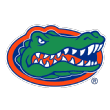
Florida Gators
Last year: Improved from 4-7 to 10-3, from 34th to ninth in S&P+, and from 50th to 11th in FPI
2019 projections: Sixth in S&P+ (8.7 wins) and eighth in FPI (8.2 wins)
A lot of Florida's 2018 improvement came after people had stopped paying attention. Florida's decades-long win streak over Kentucky ended early in the year, and the Gators lost to Georgia and Missouri by a combined 40 points. But the Gators won their final four games, averaging 45 points and wrecking Florida State and Michigan in the process.
Better yet, they return most of those responsible for that late-season surge. Quarterback Feleipe Franks and an ultra-deep skill corps are back, and last year's sophomore-heavy defense is now junior-heavy. The offensive line is undergoing a major rebuild, but the continuity is strong everywhere else despite recent attrition in the secondary.
Florida also has history on its side. While the 2010s haven't been nearly as fun in Gainesville as the 2000s, the Gators have still finished four of the past five seasons in the S&P+ top 25. It's more likely that 2017 was the outlier, not 2018.
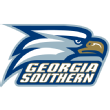
Georgia Southern Eagles
Last year: Improved from 2-10 to 10-3, from 117th to 87th in S&P+, and from 118th to 76th in FPI
2019 projections: 83rd in S&P+ (6.9 wins) and 75th in FPI (7.6 wins)
As with Florida, 2018 was more of a rebound than an out-of-nowhere surge. After averaging eight wins and a No. 72 S&P+ ranking from 2014 to 2016, their first three FBS seasons, the Eagles crumbled to 2-10 in 2017, showing signs of life only after Chad Lunsford took over as interim coach for the ousted Tyson Summers. Lunsford got the full-time job for 2018, and voila -- Southern was Southern again.
Southern should remain Southern this fall, especially now that quarterback Shai Werts' recent drug charge has been dropped. The Eagles are loaded with experience, especially on defense and on the offensive line. With trips to LSU, Minnesota, and the three best non-Southern Sun Belt teams (Appalachian State, Troy, and Arkansas State), reaching 10 wins again could be a hefty challenge, but the quality of the team itself is no longer in question.

Hawai'i Rainbow Warriors
Last year: Improved from 3-9 to 8-6, from 124th to 103rd in S&P+, and from 120th to 107th in FPI
2019 projections: 96th in S&P+ (5.9 wins) and 88th in FPI (6.7 wins)
Nick Rolovich's Warriors began 2018 6-1, averaging nearly 40 points and rising from a projected 129th in S&P+ to 78th. Quarterback Cole McDonald's midseason numbers were staggering: 65% completion rate, 24-to-2 TD-to-INT ratio, 169.8 passer rating.
McDonald began battling a nauseating number of ailments, however, from a strained MCL to internal bleeding in his scrotum. Believe it or not, that affected his performance. He completed 53% of his passes the rest of the way, with a 123.6 rating, and Hawaii finished 2-5.
McDonald is back and healthy, his offensive line could be the best in the MWC, and while the defense probably still won't be very good, it will be more experienced. The schedule is unforgiving -- three Pac-12 opponents and Army in nonconference games, plus trips to Nevada and Boise State -- so reaching another bowl will be tricky, but a healthy McDonald means a high ceiling.
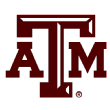
Texas A&M Aggies
Last year: Improved from 7-6 to 9-4, from 36th to 11th in S&P+, and from 40th to 13th in FPI
2019 projections: 11th in S&P+ (7.1 wins) and 11th in FPI (7.4 wins)
You're probably seeing a trend here. Cincinnati, Georgia Southern, and Hawaii all improved on paper, but their win totals all got a boost from favorable schedules that will get harder (even while the team improves) in 2019.
Consider A&M the poster child for this effect. The Aggies play the typical West gauntlet but also draw a Georgia trip in interdivision play and visit Clemson in nonconference. They play each of S&P+'s projected top-four teams and seven of the top 17.
The Aggies will have to play at a top-10 level or better to match last year's win total. They very well might. The first-year improvement that Jimbo Fisher engineered seemed organic and sustainable, and while the Aggies have to deal with pretty stiff turnover on both sides of the ball, they still have QB Kellen Mond and a receiving corps that has gone from sophomore-heavy to junior-heavy. They're incredibly dangerous.
Teams that will bounce back
Fifteen teams also fell by at least nine adjusted points per game last year, and two -- Florida State and Louisville -- fell by dramatic margins: 21.4 ppg for FSU, 28.3 for Louisville. Since 2006, only three teams have fallen by a larger amount than last year's Cardinals: 2009 Ball State, 2009 Rice, and 2012 Southern Miss. That's the wrong kind of rarefied air for the denizens of Cardinal Stadium.
Partially because of the depth of the tumble, the Seminoles and Cardinals are both among the five teams I feel are most likely to rebound in 2019. Who else will? And by how much?
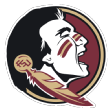
Florida State Seminoles
Last year: Fell from 7-6 to 5-7, from ninth to 71st in S&P+, and from 20th to 67th in FPI
2019 projections: 33rd in S&P+ (6.7 wins) and 21st in FPI (8.1 wins)
There are two ways to look at FSU's recent malaise. On one hand, bad offensive lines -- like the historically awful one the Seminoles fielded last year -- can rebound pretty quickly, especially with better luck when it comes to injuries. If the 2019 line is simply mediocre, there's enough talent elsewhere to push a rebound of two or three wins, minimum. Plus, new offensive coordinator Kendal Briles could potentially bring his typical jolt of energy -- both FAU's offense in 2017 and Houston's in 2018 improved dramatically under his guidance.
On the other hand, though, this wasn't a one-year funk. The 2018 season might have been an outright disaster, it was also the fifth consecutive year in which FSU's S&P+ ranking fell. It could take a while to steer out of that skid.
Either way, it's a no-brainer to pick the Noles to improve this fall, simply because of how far they fell.
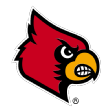
Louisville Cardinals
Last year: Fell from 8-5 to 2-10, from 14th to 98th in S&P+, and from 22nd to 103rd in FPI
2019 projections: 82nd in S&P+ (4.2 wins) and 66th in FPI (4.4 wins)
It should be noted that in his first season succeeding Bobby Petrino, Scott Satterfield takes over a full-on Year Zero situation this fall.
Petrino left smoking wreckage behind in Louisville, and Satterfield's first starting lineup could feature as few as six to eight seniors. The QB group lost all confidence last fall. There are certainly some exciting young athletes, but Satterfield has to build a new culture from scratch. That's usually not an overnight task.
So it wouldn't be smart to bet on a bowl bid or anything, but there is raw talent at the quarterback position and in the receiving corps, and at worst, the defense will be far more experienced than in 2018. Whether the Cards can run the ball like Satterfield wants to is quite unclear, but the bar is set at two wins and a triple-digit ranking. That's something the Cardinals can probably clear.
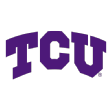
TCU Horned Frogs
Last year: Fell from 11-3 to 7-6, from 16th to 43rd in S&P+, and from 12th to 47th in FPI
2019 projections: 31st in S&P+ (7.3 wins) and 35th in FPI (7.3 wins)
In 2013, TCU ranked eighth in defensive S&P+ -- good by even Gary Patterson's standards -- but the offense lost its way. Starting QB Casey Pachall broke his arm and missed five games, and replacement Trevone Boykin was not yet ready to thrive. With some offseason scheme changes and improvement from Boykin, the Frogs ignited in 2014, winning 12 games and a share of the Big 12 title.
I'm not going to predict 12 wins, but a lot of TCU's 2018 issues reflected shades of 2013. The defense remained excellent (16th), and QB Shawn Robinson's midseason injury made a shaky attack worse. (TCU ended up 91st in offensive S&P+, its worst ranking since 2013, and Robinson transferred.) There was no coordinator change this time, and the QB race is ongoing, but simple in-season continuity should create offensive improvement, and the defense probably will still be Patterson-level good.

Virginia Tech Hokies
Last year: Fell from 9-4 to 6-7, from 21st to 55th in S&P+, and from 18th to 55th in FPI
2019 projections: 34th in S&P+ (8.0 wins) and 32nd in FPI (8.3 wins)
With a massively overhauled defense, a painfully young secondary and an early season QB injury, Tech's 2018 drop was the easiest to both predict and explain. The Hokies fell from ninth to 77th in defensive S&P+, and while the offense still improved overall behind QB Ryan Willis, there were lots of ups and downs.
It was pretty easy to see a stumble coming, and it's just as easy to now forecast a rebound. The offense that rallied to finish 41st in offensive S&P+ brings back Willis and a junior-heavy skill corps, and after nearly complete attrition a year ago, the Hokies return nearly their entire secondary. Their upside is as high as anyone's in the ACC Coastal aside from maybe Miami, and the primary thing preventing them from bouncing back to nine wins is a schedule that includes trips to Miami, Notre Dame and Virginia.

Wisconsin Badgers
Last year: Fell from 13-1 to 8-5, from third to 19th in S&P+, and from seventh to 24th in FPI
2019 projections: 14th in S&P+ (8.8 wins) and 38th in FPI (6.6 wins)
You've probably caught on by now that my S&P+ ratings and the ESPN Stats & Information FPI share the same sentiment about most teams. That makes Wisconsin fascinating to me, as the two systems disagree dramatically, by 24 places and 2.2 wins.
Wisconsin was as efficient as ever on offense last year but was perhaps unsustainably bad in specific situations (third-and-medium, to name one). The Badgers also suffered massive turnover in the secondary and injury on the defensive front. This season they have to replace their starting QB and most of their offensive line, and there's not a proven pass-rusher to be found.
I don't see QB play getting worse, though, and I can't even pretend to worry about a Wisconsin O-line. The skill corps is loaded, and a tested secondary could be excellent if it gets just the slightest help from the pass rush.
